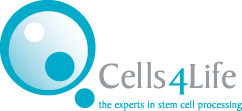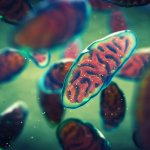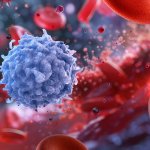Stem cells are the foundation of other cells in the body. They have the unique ability to differentiate into specialised cells with more specific functions such as brain cells, blood cells, heart muscle cells, or bone cells.
Location of stem cells
Stem cells can be found in various parts of the body, including:
- Embryonic stem cells: These are derived from embryos that are a few days old. The use of embryonic cells often brings up ethical questions.
- Adult stem cells: These are found in adult tissues such as bone marrow, brain, liver, and muscle. Induced pluripotent stem cells (iPSCs) are adult cells that have been genetically reprogrammed to behave like embryonic stem cells.
- Umbilical cord stem cells: These are collected from the umbilical cord and placenta after a baby is born and once the cord has been clamped and cut and the placenta delivered,
- Amniotic fluid stem cells: These are found in the amniotic fluid that surrounds a developing foetus.
- Dental pulp stem cells: These are found in the dental pulp of teeth.
- Adipose (fat) stem cells: These are found in fatty tissue.
Each type of stem cell has its own unique characteristics and different applications in medical research and treatment.
What are stem cells used for?
Stem cells have the potential to be used in a wide range of medical treatments and therapies, including:
- Regenerative medicine – using stem cells to replace or repair damaged or diseased tissues and organs, such as in bone marrow transplants for leukaemia, or to help regrow damaged heart tissue.
- Gene therapy – using stem cells to deliver healthy genes to treat genetic diseases, such as sickle cell anaemia or haemophilia.
- Drug development – using stem cells to test new drugs and treatments for safety and efficacy.
- Cosmetic applications – using stem cells in anti-aging treatments and cosmetic procedures.
- Research – using stem cells to study disease development and progression, as well as to gain a better understanding of normal cell development and function.
It’s important to note that the use of stem cells in medical treatments is still a developing field, and research is being conducted to further explore their potential as treatment options.
Examples of conditions treated with stem cells
Some of the conditions that are currently being treated using stem cells include:
- Blood disorders: Stem cells can be used to treat a variety of blood disorders such as leukaemia, lymphoma, and sickle cell anaemia.
- Neurological disorders: Stem cells are being studied for their potential to treat neurological conditions such as Alzheimer’s disease, Parkinson’s disease, and spinal cord injuries.
- Autoimmune diseases: Stem cells are being studied as a possible treatment for autoimmune diseases such as multiple sclerosis, lupus, and rheumatoid arthritis.
- Cardiovascular diseases: Stem cells are being studied as a possible treatment for heart disease, including heart failure and coronary artery disease.
- Diabetes: Stem cells are being studied as a possible treatment for type 1 diabetes by replacing the damaged cells in the pancreas that produce insulin.
- Bone and cartilage disorders: Stem cells are being studied as a possible treatment for bone and cartilage disorders such as osteoarthritis and osteoporosis.
- Skin disorders: Stem cells are being studied as a possible treatment for skin disorders such as burns, wounds, and certain types of skin cancer.
Some treatments are still in the clinical trial phase. You can view all current and completed clinical trials at clinicaltrials.gov.
Explore what conditions can be treated using umbilical cord stem cells, which are currently used to treat over 80 conditions. Some examples can be found here on our page on Stem Cell Treatments.
Request a Welcome Pack
Find out more about cord blood banking by downloading a Welcome Pack now.









